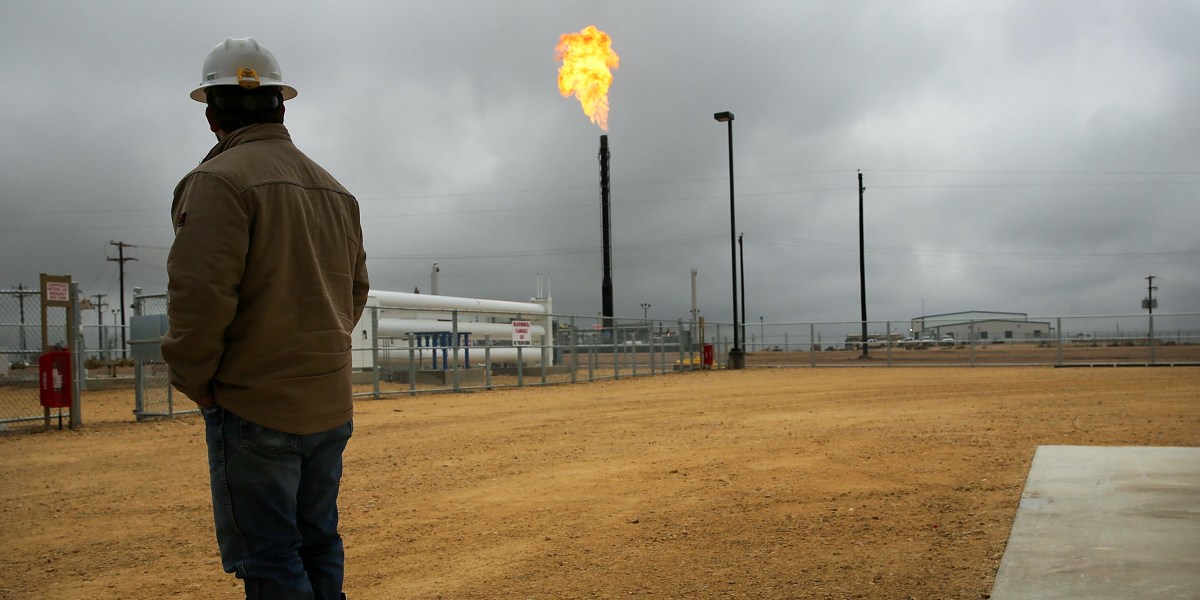Why this year’s UN climate conference is all about the money
This article is from The Spark, MIT Technology Review’s weekly climate newsletter. To receive it in your inbox every Wednesday, sign up here.
I love warm, sunny days like the ones we’ve been having in the Northeast this week. As a climate reporter I’m also a bit concerned, though. It’s way too hot. I’m trying to follow some advice I heard recently: “Enjoy the weather, worry about the climate.”
To be clear, I haven’t seen any climate change attribution studies for this particular heat wave. But the past eight years have been the warmest on record, so I’ve definitely had climate change on my mind while I walk around town in a t-shirt in November.
I’m not the only one thinking about climate change right now, since it’s the kickoff of the UN’s climate conference, COP27. It’s a key week for climate action, so let’s take some time to dig into a few things you need to know, including fatigue around all these international meetings, lots of talk about money, and some backlash to recently-passed US climate policy.
The context: lots of talk
COP is shorthand for the United Nations’ annual climate change conference. (The acronym stands for “Conference of the Parties.”) This year will be the 27th, hence, COP27. It’s being held over the next two weeks in Sharm El Sheikh, Egypt.
These conferences are time for world leaders and the climate community to get together to make new commitments, ask for support, and just generally talk.
This last one is becoming increasingly controversial. Many in the climate community have expressed frustration that we keep talking about climate action while greenhouse gas emissions and temperatures are rising almost every year. Thirty years of promises on climate action have been a lot of “blah blah blah,” as activist Greta Thunberg put it last year.
It’s not like nothing happens at the conferences, but anything that will gain approval from a significant number of major nations “has to be watered down to the point that it simply doesn’t demand much,” as my colleague James Temple put it in his introduction to COP26 last year.
Speaking of watered-down promises, the Paris Agreement is a product of COP21 in 2015. It’s the closest thing we have to an international treaty on climate change, with a couple of broad goals:
- Reduce warming to 2°C this century, and do our very best to limit it to 1.5°C.
- Provide climate financing to developing countries.
- Review individual nations’ plans every five years.
There’s nothing binding in the Paris Agreement, but it frames many of the international conversations about climate action. And right now, we’re not measuring up. Recent reports have made it clear that the world is still far from cutting emissions fast enough to meet Paris targets. Limiting warming below 1.5°C is looking increasingly out of reach, and even 2°C is going to require more action.
The major topic: money
One of the biggest conversations at COP27 will be over one question: who should be footing the bill for climate change?
It’s been an unprecedented year for climate disasters. Flooding in Pakistan killed over 1,000 people, destroyed nearly 2 million homes, and caused an estimated $15 billion in damages. Drought in East Africa has wiped out crops, threatening people across the region with famine.
These disasters are hitting hardest for countries that have contributed very little to climate change, so some argue that rich countries like the US, which has contributed about 20% of the world’s historical emissions, should pay for it. China emits far more today than any other nation, and is the second-largest historical emitter, with 11% of the global total.
“We are on a highway to climate hell with our foot on the accelerator.”
UN Secretary General Antonio Guterres
In a historic move, climate financing for “loss and damages” made it onto the official agenda for COP27. This is funding that would go to helping countries deal with climate disasters like floods and droughts that are becoming more common. The language took hours of negotiations to finalize, and it’s unclear what progress officials will make on actually coming to an agreement, especially because countries are already falling behind on previous climate finance obligations.
In 2009, a group of countries including the US committed to providing $100 billion dollars per year by 2020. The funding is supposed to help developing countries cut their emissions and adapt to the effects of climate change with protections against effects like drought and sea level rise.
The contributing group has fallen short, reaching just $83 billion in financing in 2020. And some countries like the US, Canada, and the UK aren’t contributing their “fair share,” according to a recent analysis by CarbonBrief that looks at countries’ financial contributions compared to their historical emissions contributions to climate change.
Missing the mark on current climate finance targets doesn’t bode well for those looking for more help, but we’ll be keeping track of conversations over the next two weeks to see what officials come up with. Hopefully, not just more blah blah blah.
What else I’m watching: reactions to US climate policy
COP27 comes with many in the climate world still celebrating passage of the Inflation Reduction Act, which was signed into law in August and provides $370 billion in funding for climate and energy action in the US.
When it passed, many pointed out that such a large funding bill was a success that could restore some “climate credibility” for the US on international stages like COP27. But some provisions in the IRA are also drawing criticism from US allies, especially in the EU, that aren’t happy about what they see as protectionist policies that will harm their countries.
The IRA contains tax credits for everything from solar and wind manufacturers to consumers purchasing electric vehicles, and many of these credits are boosted for technology that’s manufactured within the US.
For example, solar power projects can qualify for a 30% tax credit, but if the hardware used is made in the US, the credit is bumped to 40%. There are also complicated rules in the EV tax credits that favor batteries and materials made in the US (read more on those here).
This wasn’t an accident: a major goal of the IRA was to boost American industry, creating jobs and pushing economic development while also building out the domestic supply chains of batteries, solar, and other technologies that are essential to cutting emissions and fighting climate change. Many of these products are mainly made in China, and the US wants to catch up.
As E&E News reported this week, officials in the EU are raising issues with these “buy American” provisions, along with Japan and South Korea.
The concerns are a window into international climate progress: climate change is a global problem, but countries largely work to make change within domestic political agendas.
Keeping up with Climate
Take an exclusive look into Alphabet X’s newest climate project. My colleague James got the inside scoop on one of X’s “moonshots,” which is focused on tracking ocean ecosystems using computer vision. The project, called Tidal, was originally focused on aquaculture, but the team is working to apply it to better understanding the opportunity for carbon removal using seagrass. (MIT Technology Review)
Automakers want more clarity about new rules in the EV tax credits. (E&E News)
An environmental group is challenging a new advanced recycling plant in Pennsylvania, citing health and environmental concerns. The facility would turn plastics into feedstocks for the chemical industry. (Inside Climate News)
When Atlanta banned electric scooters at night, traffic went up, suggesting that micromobility devices really do cut down on car use. (Nature Energy)
Governments are turning against deep sea mining. While the ocean floor can be a source of valuable metals, mining could have devastating consequences for ecosystems. (Bloomberg)
A nonprofit is using satellites to more accurately estimate emissions from industry. By measuring heat from steel plants and gasses from power plants, Climate TRACE is working to build a hyperlocal map of emissions. (New York Times)




